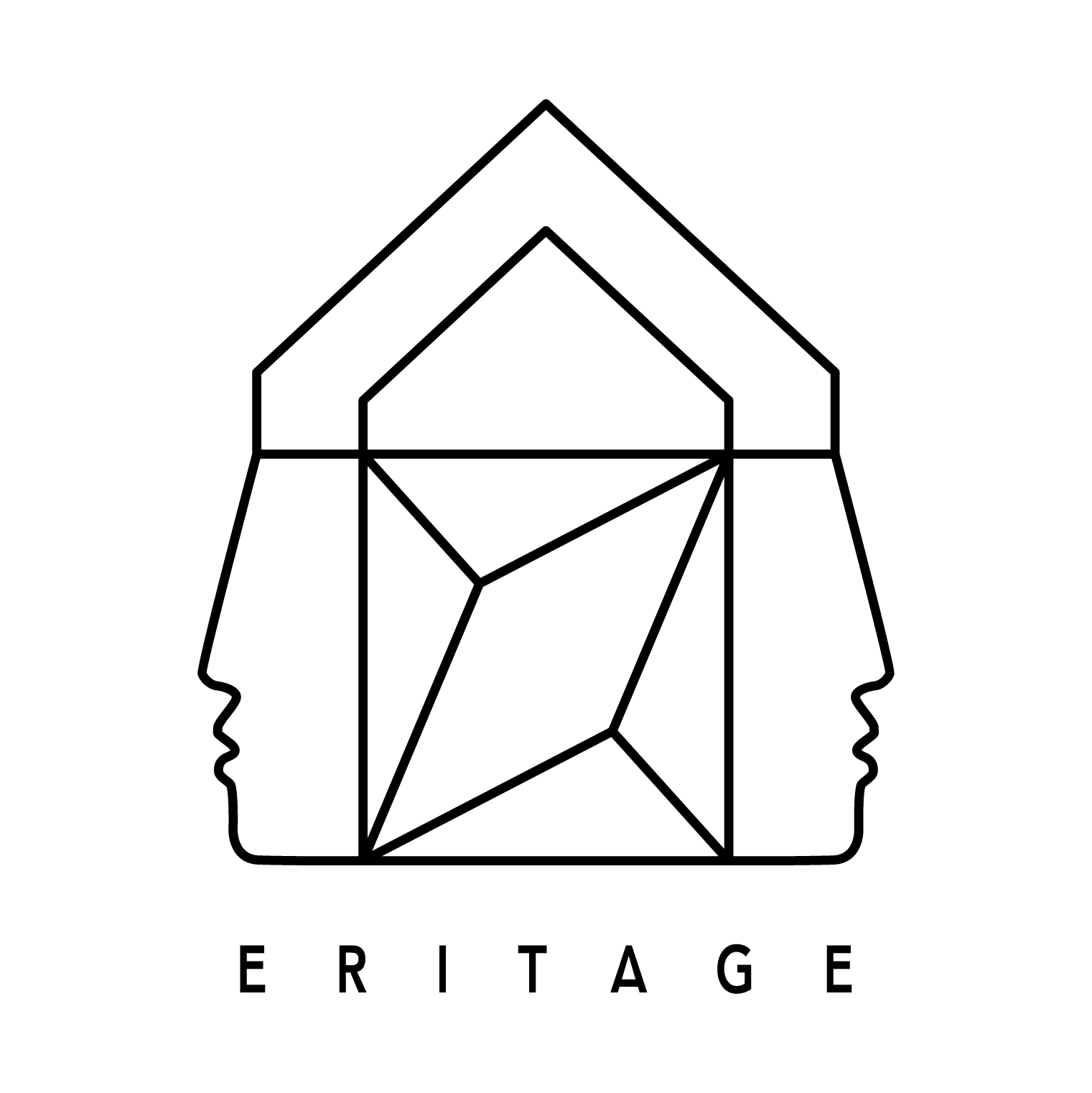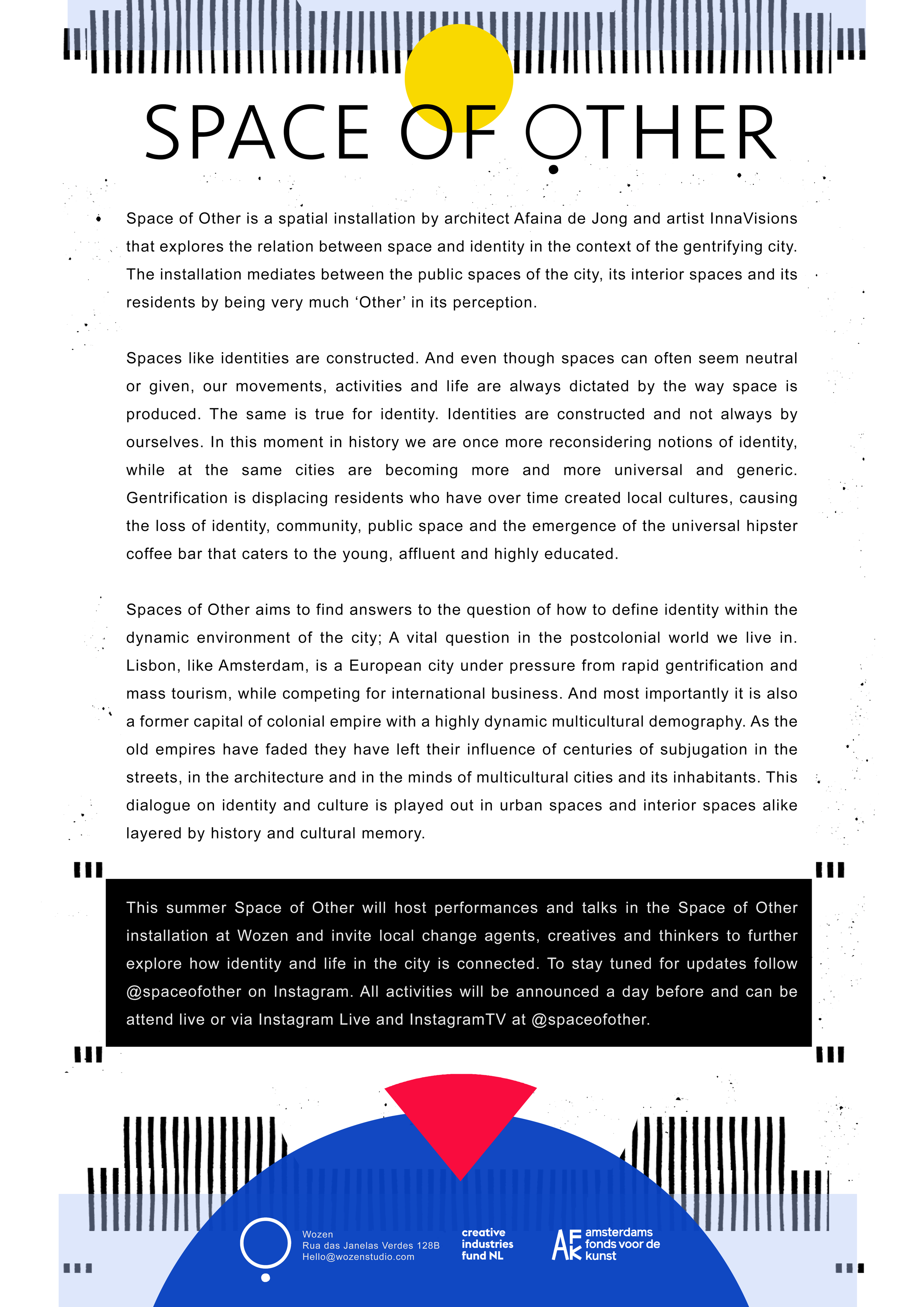MAIO - AGO 18 | Afaina de Jong & Innavision
(texto português abaixo)
Space of Other is a spatial installation by architect Afaina de Jong and artist Innavision that explores the relation between space and identity in the context of the gentrifying city. The installation mediates between the public spaces of the city, its interior spaces and its residents by being very much ‘Other’ in its perception.
Spaces like identities are constructed. And even though spaces can often seem neutral or given, our movements, activities and life are always dictated by the way space is produced.
The same is true for identity. Identities are constructed and not always by ourselves. In this moment in history we are once more reconsidering notions of identity, while at the same cities are becoming more and more universal and generic. Gentrification is displacing residents who have over time created local cultures, causing the loss of identity, community, public space and the emergence of the universal hipster coffee bar that caters to the young, affluent and highly educated.
Spaces of Other aims to find answers to the question of how to define identity within the dynamic environment of the city; A vital question in the postcolonial world we live in.
Lisbon, like Amsterdam, is a European city under pressure from rapid gentrification and mass tourism, while competing for international business. And most importantly is also a former capital of colonial empire with a highly dynamic multicultural demography. As the old empires have faded they have left their influence of centuries of subjugation in the streets, in the architecture and in the minds of multicultural cities and its inhabitants. This dialogue on identity and culture is played out in urban spaces and interior spaces alike layered by history and cultural memory.
During May and June Space of Other hosted performances and talks in the Space of Other installation at the gallery and invited local change agents, creative and thinkers to further explore how identity and life in the city is connected.
…
Space of Other é uma instalação espacial da arquiteta Afaina de Jong e do artista Innavision que explora a relação entre espaço e identidade no contexto de uma cidade durante o processo de gentrificação. A instalação medeia entre os espaços públicos da cidade, seus espaços interiores e seus residentes na posição do “Outro” na sua percepção.
Espaços como identidades são construídos. E mesmo que os espaços possam parecer neutros ou dados, nossos movimentos, atividades e vida são sempre ditados pela forma como o espaço é produzido. O mesmo é verdade para identidade. As identidades são construídas e nem sempre por nós mesmos. Neste momento da história, estamos mais uma vez reconsiderando as noções de identidade, enquanto as mesmas cidades estão se tornando cada vez mais universais e genéricas. A gentrificação está deslocando os moradores que, com o passar do tempo, criaram culturas locais, causando a perda de identidade, comunidade, espaço público e o surgimento da cafeteria universal moderna que atende aos jovens, ricos e altamente qualificados.
Spaces of Other visa encontrar respostas para a questão de como definir identidade dentro do ambiente dinâmico da cidade; Uma questão vital no mundo pós-colonial em que vivemos. Lisboa, como Amsterdã, é uma cidade européia sob pressão da rápida gentrificação e turismo de massa, enquanto concorre a negócios internacionais. E o mais importante, é também uma antiga capital do império colonial com uma demografia multicultural altamente dinâmica. À medida que os antigos impérios se desvaneceram, deixaram a influência de séculos de subjugação nas ruas, na arquitetura e nas mentes de cidades multiculturais e seus habitantes. Este diálogo sobre identidade e cultura se desenrola em espaços urbanos e espaços interiores, igualmente em camadas pela história e pela memória cultural.
>> Durante o verão, o Space of Other sediou apresentações, conversas e dinâmicas do cotidiano que ocorreram dentro da instalação e convidou agentes locais de mudança, criativos e pensadores para explorar ainda mais como a identidade e a vida na cidade estão conectadas.
Este projeto integrou o pavilhão Holandês na Bienal de Arquitetura de Veneza de 2021. Leia Mais












